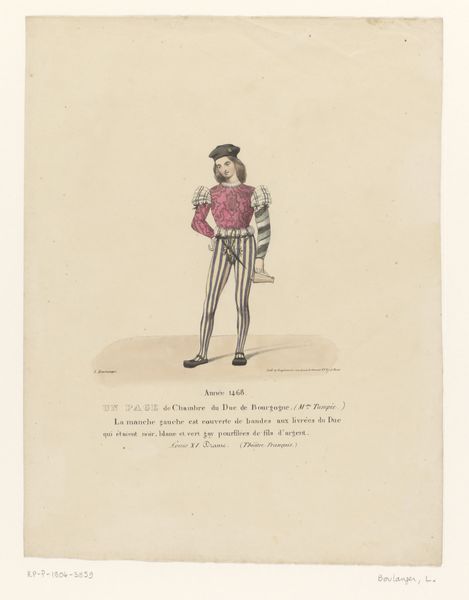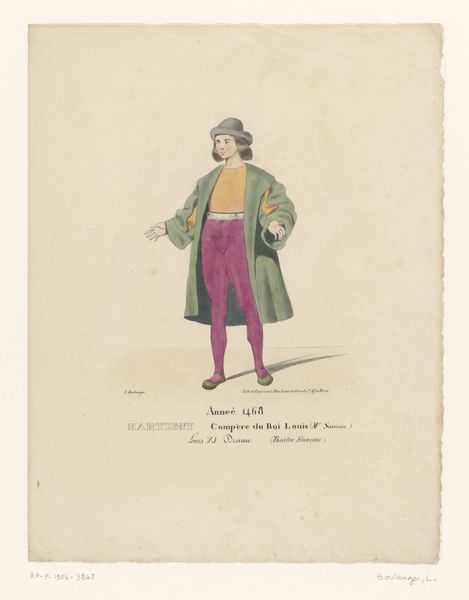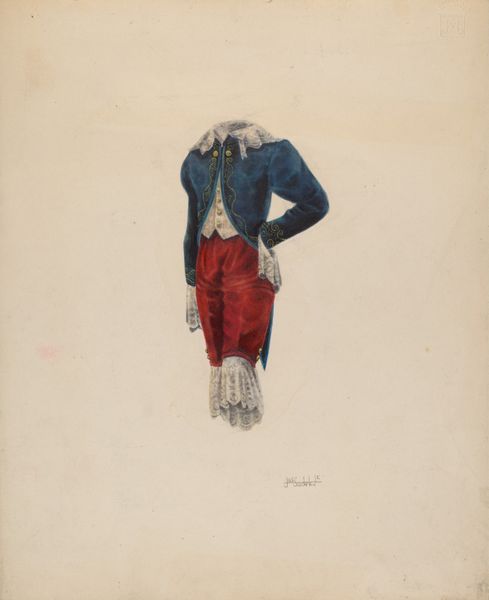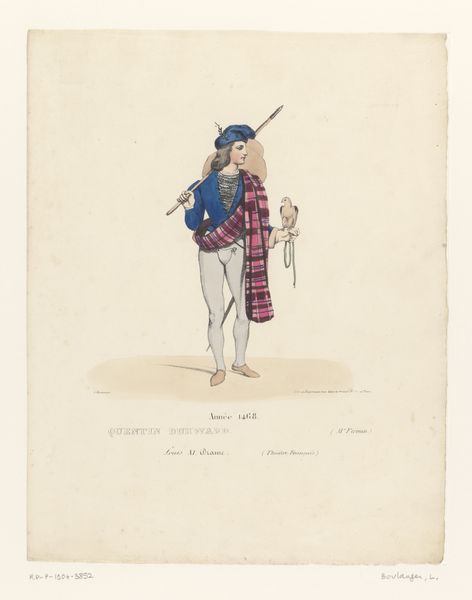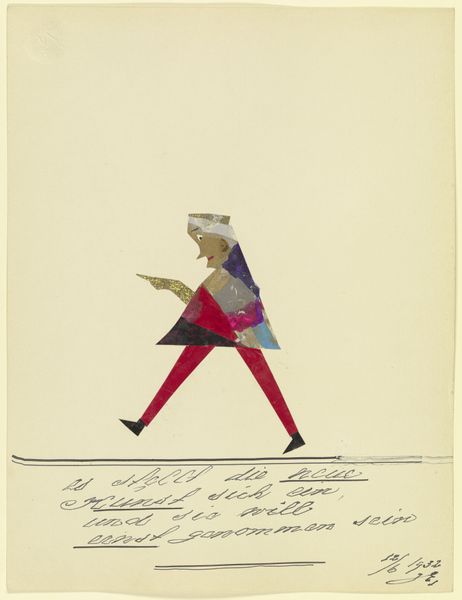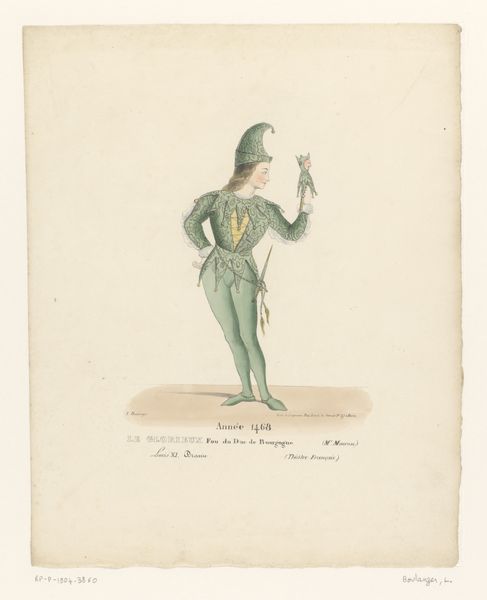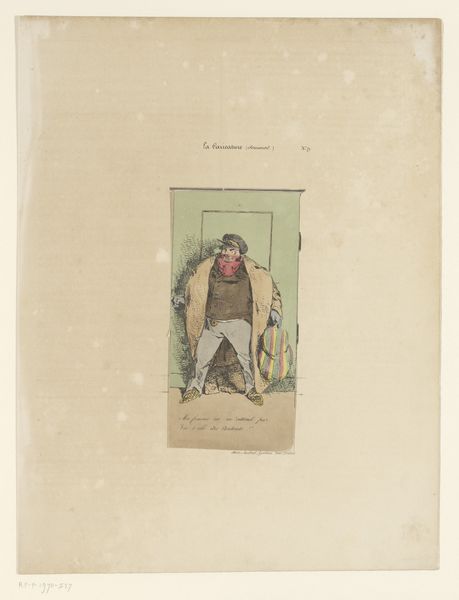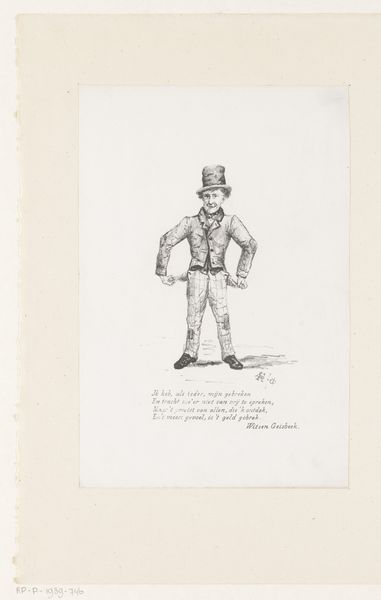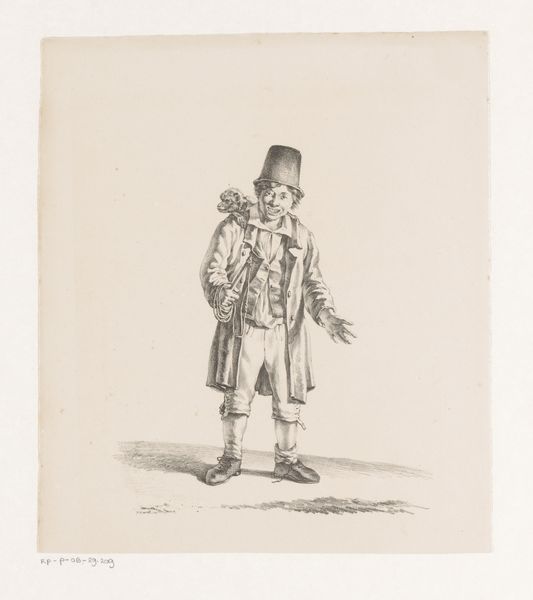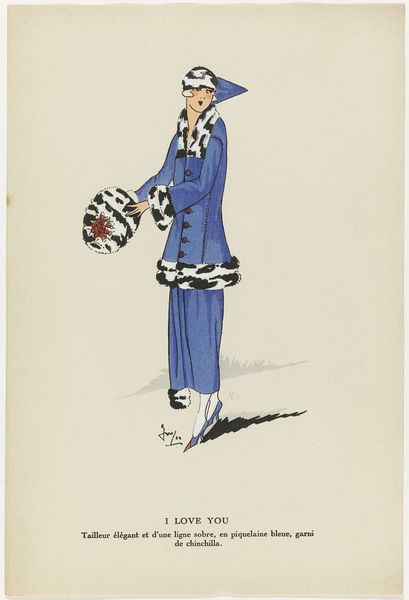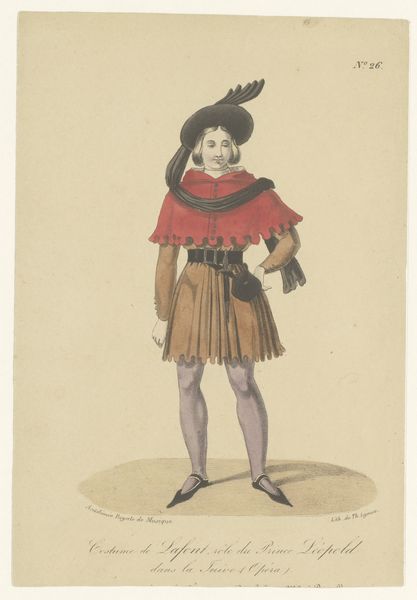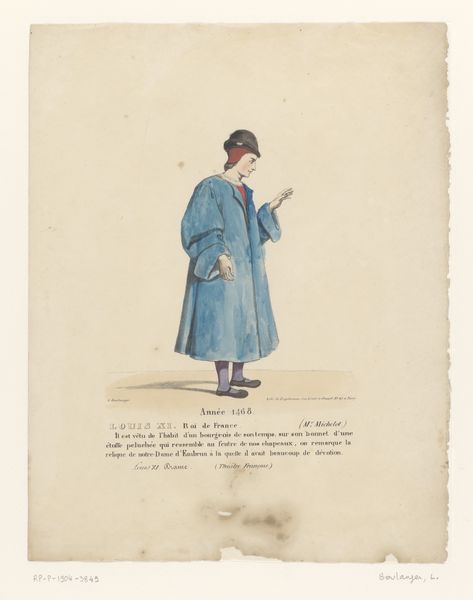
Kostuum van een page van de Franse koning uit het drama Louis XI à Péronne 1826
0:00
0:00
drawing, watercolor
#
drawing
#
watercolor
#
romanticism
#
costume
#
watercolour illustration
#
watercolor
Dimensions: height 345 mm, width 272 mm
Copyright: Rijks Museum: Open Domain
Curator: Look at this watercolor drawing, dating back to 1826, by Louis Boulanger. It's titled "Kostuum van een page van de Franse koning uit het drama Louis XI à Péronne," held in the Rijksmuseum's collection. Editor: It’s so striking, immediately whimsical yet also somber. I find the flat, bright colours coupled with the stark, minimalist background really compelling. Curator: Indeed. Notice how the Romantic style emphasizes the symbolic weight of clothing. What does this specific attire communicate about status and belonging in the French court of the era? Editor: Costume signifies a huge amount about status and craft—look closely at the meticulously rendered details, each signifying hours of labour for the theatre and the symbolic meaning of red in those striped stockings... We can appreciate the social relations required for such a theatrical production in 1826, not to mention the earlier drama's depiction of Louis XI. What did the costume represent for the Parisian theater audience in terms of royalty? Curator: It taps into both the glamor and restrictions of courtly life. The vibrant yellow suggests loyalty and pageantry, but the tightly fitted tunic and hat indicate servitude to power. Even the artist, Boulanger, hints at a dual relationship, depicting the freedom and bondage present within such service, playing out social and psychic dynamics. Editor: Right. I find myself dwelling on what looks like watercolour on paper. The cost involved would suggest who the target audiences were and the artist's intention in reproducing stagecraft on a readily reproducible medium. These vibrant reds and blues have weight; this isn’t simply decoration but communication and labour made visually arresting on stage. Curator: Precisely. The visual motifs carry symbolic meaning to influence those seeing this figure in costume—both at the theater then, and still to audiences today through reproductions such as this drawing, prompting an emotive and lasting recognition of power, of place, and even identity in this costume from French cultural memory. Editor: Reflecting on how costume is about labor as well as stage illusions opens interesting routes into considering not just theater production and the art world but the larger society surrounding these visual signs. Curator: Yes, an invitation into considering the echoes of past eras through very vivid aesthetic remnants.
Comments
No comments
Be the first to comment and join the conversation on the ultimate creative platform.
